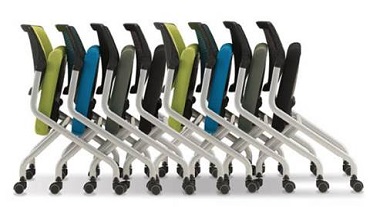Sitting Pretty: A Deep Dive into Public Seating Trends and Transformations
Public seating is an essential yet frequently underestimated component of urban design, exerting a significant influence on the social dynamics and practical infrastructure of our cities. Whether it's the vibrant city squares or the tranquil parks, public seating forms the foundation for community engagement, leisure, and inclusivity.

As our urban environments undergo continual development, the trends and changes in public seating also experience evolution. This piece delves into the most recent advancements and transitions in this critical aspect of public spaces.
The Evolution of Public Seating
The evolution of public seating spans centuries, reflecting shifts in societal needs and design preferences. From the ancient use of stone and marble in theatres and forums to the mediaeval introduction of pews and benches in religious settings, seating has adapted to various contexts.
The Renaissance brought a focus on decorative wooden and wrought iron benches in gardens, while the 19th century saw the rise of standardised cast iron and wooden benches in urban parks and plazas. The 20th century ushered in a period of modernism, favouring simplicity and functionality with materials like concrete and steel.
In recent decades, there has been a move towards ergonomic, sustainable designs, incorporating innovative materials and technology to enhance comfort, accessibility, and environmental impact. Today, public seating trends emphasise modularity, flexibility, and integration into urban green spaces, reflecting a commitment to creating inclusive, vibrant communities.
Modern Trends in Public Seating
1. Ergonomics and Comfort
Modern public seating now places a strong emphasis on ergonomics and user comfort. Designers are increasingly incorporating curved lines and supportive structures to ensure that seats are comfortable for prolonged use. Materials have also evolved, with a shift towards weather-resistant yet comfortable options such as treated timber, recycled plastics, and metal alloys.
2. Sustainability
Environmental concerns are influencing public seating trends. Sustainable materials and practices are at the forefront, with an emphasis on recycled and locally sourced materials. Innovations such as solar-powered benches that provide lighting or charging stations for electronic devices are becoming more common, blending utility with eco-friendliness.
3. Inclusivity and Accessibility
Public seating is now being designed with inclusivity in mind. This includes creating spaces that are accessible to people with disabilities, such as benches with armrests and back support, or seating areas with varied heights to accommodate different needs. The goal is to ensure that public spaces are welcoming to all community members.
4. Interactive and Multifunctional Designs
Gone are the days when a bench was just a place to sit. Contemporary public seating often incorporates multifunctional elements, such as integrated planters, bicycle racks, and even play elements for children. These designs encourage interaction and engagement, making public spaces more dynamic and enjoyable.
5. Aesthetic Integration
Public seating is increasingly seen as an integral part of the overall aesthetic of urban spaces. Designers are creating bespoke seating solutions that reflect the cultural and historical context of the area. Artistic benches, often created in collaboration with local artists, serve as both functional seating and public art, enhancing the visual appeal of the environment.
Benefits of Public Seating - Key Points
- - Promotes Social Interaction: Encourages community engagement and socialisation among diverse groups.
-
- Enhances Accessibility: Provides rest spots for the elderly, disabled, and those with temporary mobility issues, making public spaces more accessible.
-
- Supports Local Businesses: Attracts people to commercial areas, benefiting nearby shops and restaurants.
-
- Improves Mental Health: Offers places for relaxation and stress relief, enhancing overall well-being.
-
- Encourages Pedestrian Activity: Makes walking more enjoyable, reducing traffic and promoting environmental health.
The Future of Public Seating
The future of public seating looks set to continue this trajectory of innovation and integration. With the rise of smart cities, we can expect to see more technology-infused seating options that provide real-time information, Wi-Fi connectivity, and enhanced safety features. Moreover, as cities become more populated, the demand for versatile and space-efficient seating solutions will grow.
Public seating is a vital component of urban design, influencing how people interact with their environment and each other. The latest trends highlight a move towards more comfortable, sustainable, inclusive, and multifunctional designs that enhance the liveability and aesthetic appeal of public spaces. As we look to the future, it is clear that public seating will continue to evolve, reflecting broader societal shifts and technological advancements.
The humble bench is far more than just a place to rest; it is a symbol of a city’s commitment to its people, its culture, and its environment. By sitting pretty, we are not only enjoying a moment of rest but also participating in a dynamic and ever-evolving urban narrative.
- 24.05.2024
-
Category:
- Auditorium & Public Setting Blog